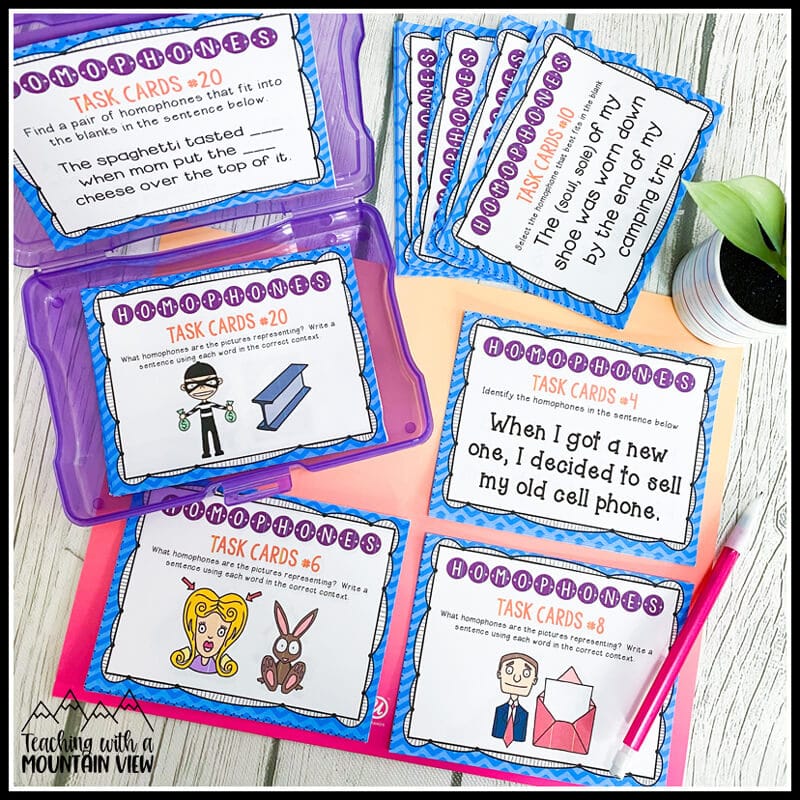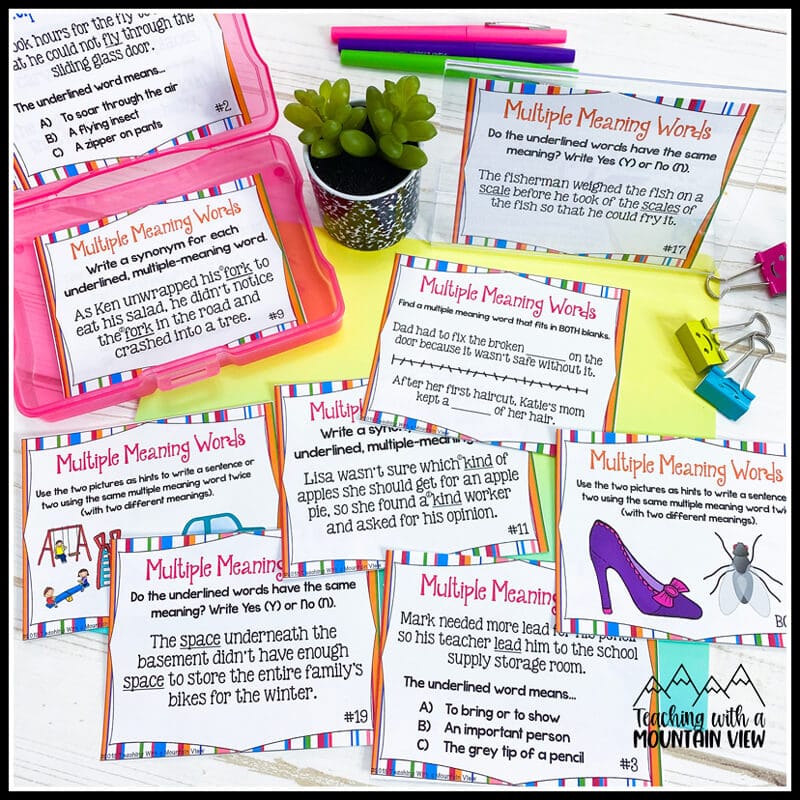How To Teach Commonly Confused Words in Upper Elementary
By Mary Montero
Share This Post:
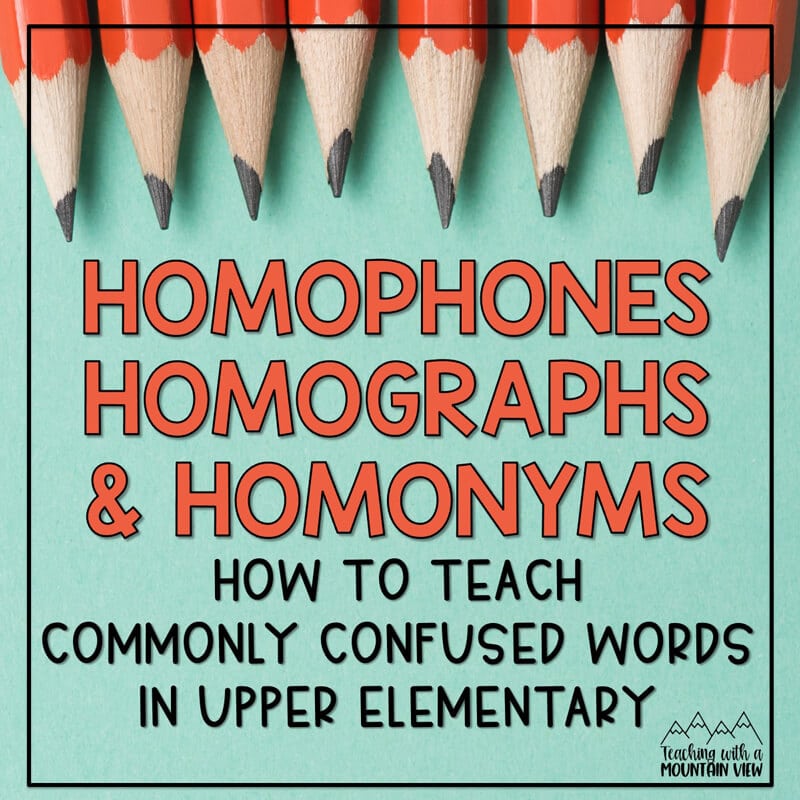
Even though upper elementary students have been introduced to homophones in earlier grades, many students (and let’s be honest… adults too!) still struggle to correctly use and understand commonly confused words. Explicit instruction, numerous examples, and additional opportunities to practice can help your students become commonly confused words experts.
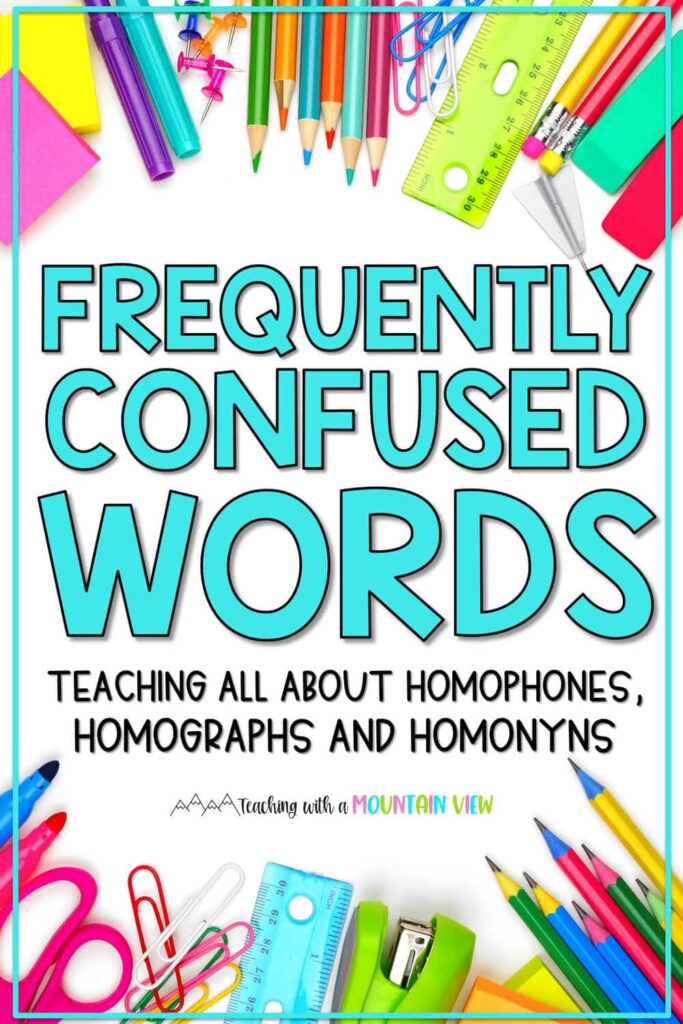
First, a quick little note about explicit instruction! It’s so important that instruction on these commonly confused and misspelled words is infused into my instruction and units throughout the year. We are consistently reviewing these skills in literacy centers, while using Mentor Sentences (Jivey creates some that are AMAZING!), and as we work through my Language Skill of the Day resource. I have found, however, that devoting a few days to the study of these words is incredibly impactful.
How To Explicitly Teach Commonly Confused Words
An anchor chart with a table like this can help students understand the similarities and differences in commonly confused words. While it’s not necessary for students to memorize the difference between homophones, homographs, and homonyms, I find that upper elementary students really love to analyze them and in turn gain a deeper understanding when you talk through the differences.
You can download the FREE reference sheet at the bottom of this post, and I highly encourage you to create the following anchor chart with your students, allowing enough room for students to find examples of commonly confused words within authentic texts and adding them as examples. I put it off to the side with plenty of room for sticky notes that they can keep track of as they read! The reference sheets are helpful to put into notebooks for those most commonly confused words!

Homophones “same sound” are words that have the same pronunciation, but different spellings and meanings.
- do, due
- it’s, its
- there, their, they’re
Homographs “same writing” are words that have the same spelling, but different pronunciations and meanings.
- bow (movement, tool)
- wound (injury, past tense of wind)
Homonyms “same name” are words that have the same spelling and same pronunciation, but different meanings.
- wave (motion, water)
- down (direction, feather)
Students can use this FREE interactive notebook page to take notes along with your anchor chart when you teach commonly confused words. The visual element is so fun for students, and it’s incredible just how often they actually reference these!

Book To Reinforce Commonly Confused Words
Read alouds are staples in all of our units. Here are Amazon affiliate links to some of our favorites that help teach commonly confused words.
My ULTIMATE favorite book of homophones is No Reading Allowed: The WORST Read-Aloud Book Ever. It’s truly epic, but it’s one that you MUST show over a document camera so students can see the spelling!
How Much Can a Bare Bear Bear? What Are Homonyms and Homophones? and A Bat Cannot Bat, a Stair Cannot Stare: More about Homonyms and Homophones are two excellent upper elementary book options.
Dear Deer: A Book of Homophones and Eight Ate: A Feast of Homonym Riddles are simpler options for third grade students. If you don’t have time to use these all during a lesson, consider how you can add them into literacy centers throughout the year as review!
Practice Activities for Commonly Confused Words
Here are a few ideas for practicing commonly confused words. You can structure an entire week around these center activities, but these are perfect to mix in throughout the year.
- Students can use Dear, Deer or Eight Ate as mentor texts to create illustrated books. Each student could make their own reference book, or you could assign words to each student and then compile pages into a class book. These could also be completed and compiled digitally. Just have students create their page in Google Slides, compile them into one Google Slides document, save as a PDF, and voila! You have created an ebook for your students to enjoy.
- Along these same lines, it’s amazing how much kids LOVE to create their own anchor charts! Pick out the words that stump your students the most often and have them make their own anchor chart focusing on just those words. I LOVE seeing how they take ownership over this activity.
- Games are SUCH a fun way for students to practice commonly confused words. Pictionary or Charades are each fun ways to reinforce differences between commonly confused words and also build in valuable movement breaks. I put a little twist on “Pictionary” when we play with these words cards. We usually do this in a small group… one student grabs a card and draws a quick picture to represent the word. As the other students in the group realize what the word is, they draw a DIFFERENT version of the word. Let’s say the first student picks “wave” and draws a hand. The other students should write the word and draw an ocean wave.
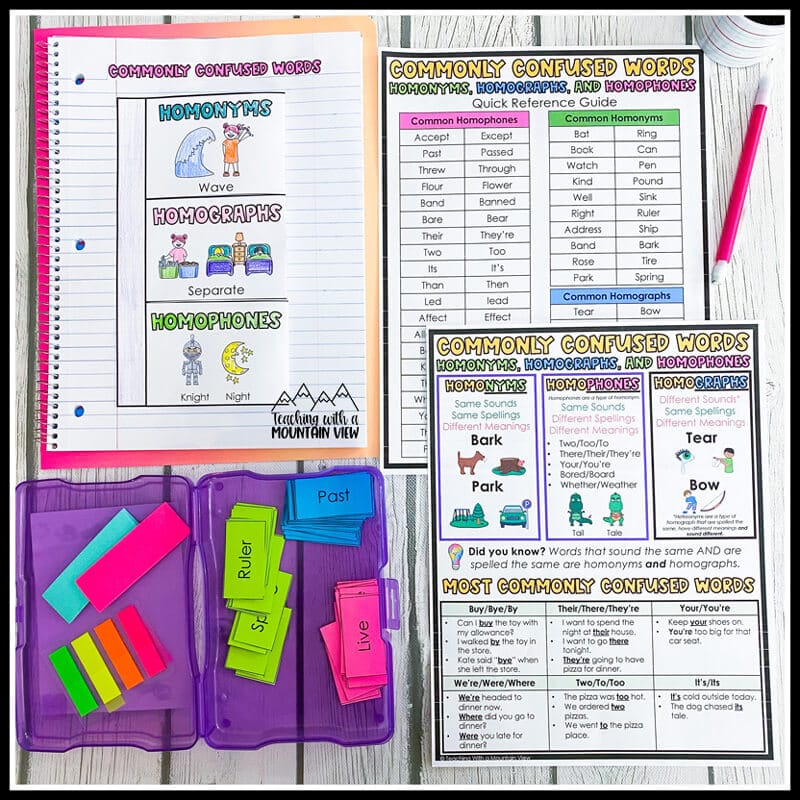
- I added another quick word/picture game to the freebie below. Memory Match Up uses both words and a matching picture in a traditional matching-up game format. This version is extra fun because some of the pictures are a bit more difficult to determine the meaning of! You can download word cards below for FREE!
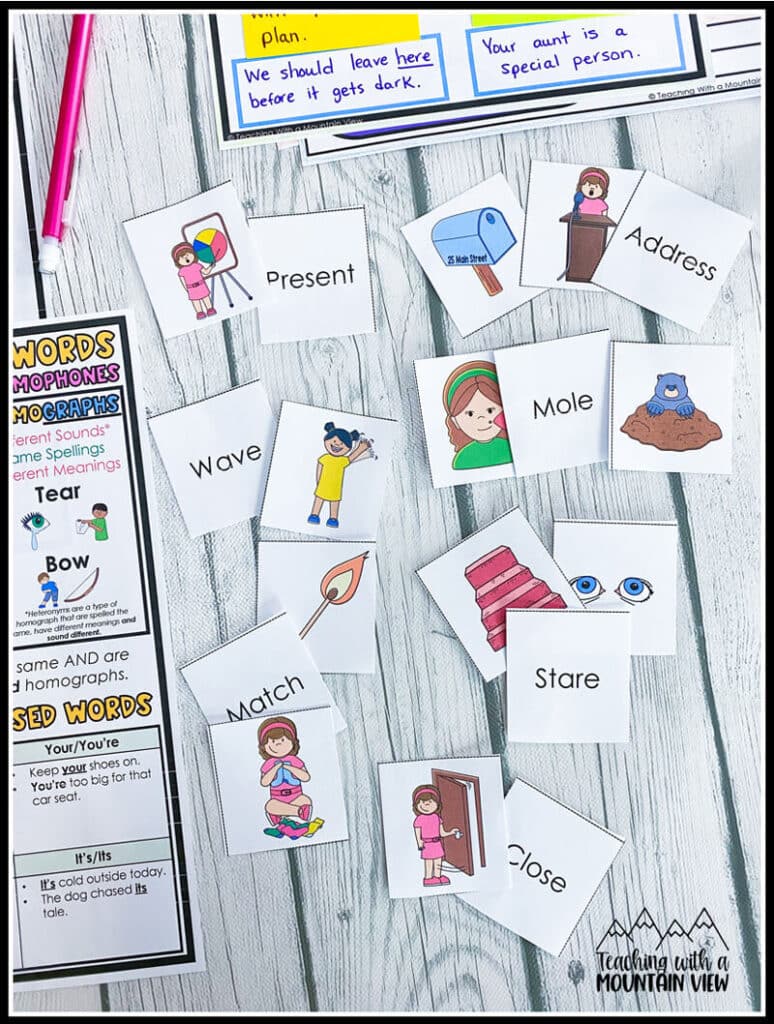
- Word Tracker: I am SUCH a huge advocate of students applying skills to authentic texts. I mentioned above that I try to always leave room on my anchor chart to start collecting words, and this is one more easy way for students to keep track of the words they are coming across in their texts!
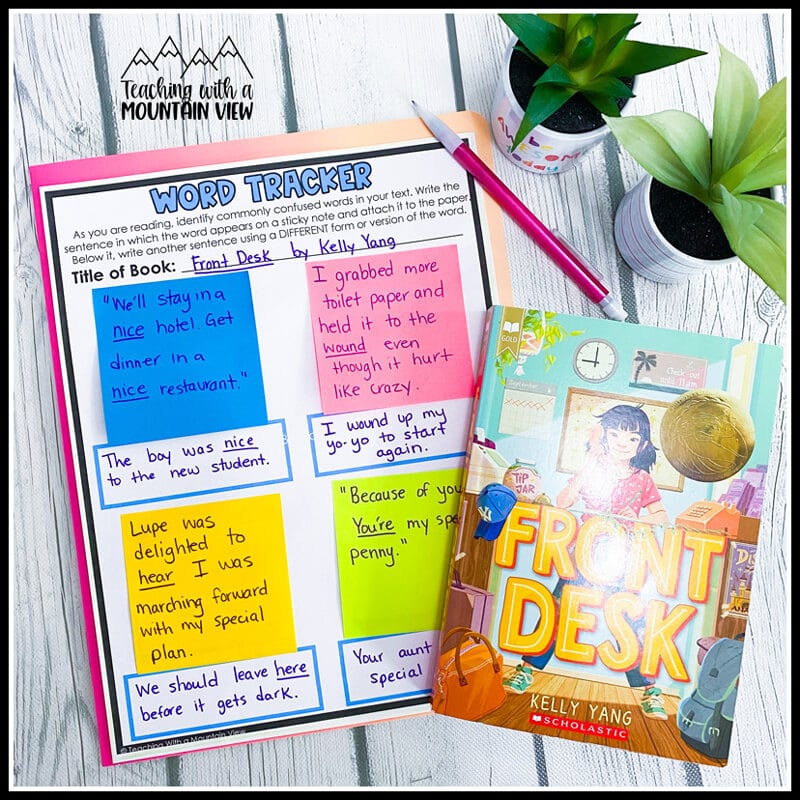
- This wouldn’t be a Teaching With a Mountain View post without mention of task cards! Task cards have endless options as warm-ups, centers, games, early finisher work and more. The Commonly Confused Words, Multiple Meaning Words, or Differentiated Homophone cards are perfect for practicing tricky words. I use these in centers, but I also tend to put one up at the beginning of literacy once or twice a week just for a quick shot of practice. You can also pull out games to play with them, use them for a quick game of scoot, and shrink them (print them in booklet format) and have your students work through them that way! The options are endless. Do you want to extend this activity even more? After they’ve done a few task cards, have them create their OWN task cards to use with the class. My students BEGGED to do this after almost every unit!
- Tell Me a Story: Okay, this one is actually my favorite activity. I have written about a similar activity before as one we do when we have little chunks of time left over and need something great to fill those extra few minutes, but this one is PERFECT for practicing commonly confused words. Here’s how it works: Student one draws a word card. They (orally) use the word correctly in a sentence or two to begin a story. The next student does not draw a card, but continues the story by using another version of the word in a sentence that continues the story. It’s not until all forms of the word (that they know) have been used that we pull another card and continue the story. Here’s a sample of what this might look like:
Student 1 pulls the card “their.”
Student 1: Oh my goodness, would you look at their house!?
Student 2: What in the world? I was just there yesterday!
Student 3: I thought that they’re out of town right now, though!
Student 4 pulls a new card, “too” and continues the story.
- What better way is there to hook kids these days than phones? I know MY kids are begging for phones, so this activity was super appealing to them! These FREE text message edits are a unique way to practice, also included in the free Commonly Confused Word Kit below. You can even use these as an assessment.
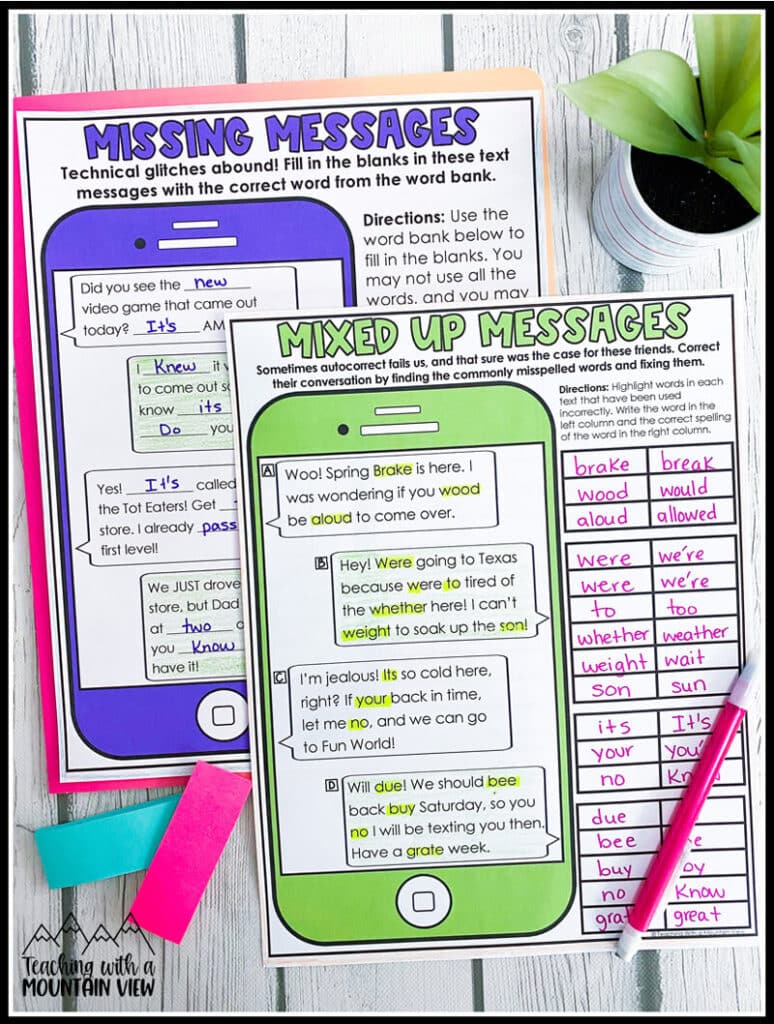
Free Commonly Confused Word Kit
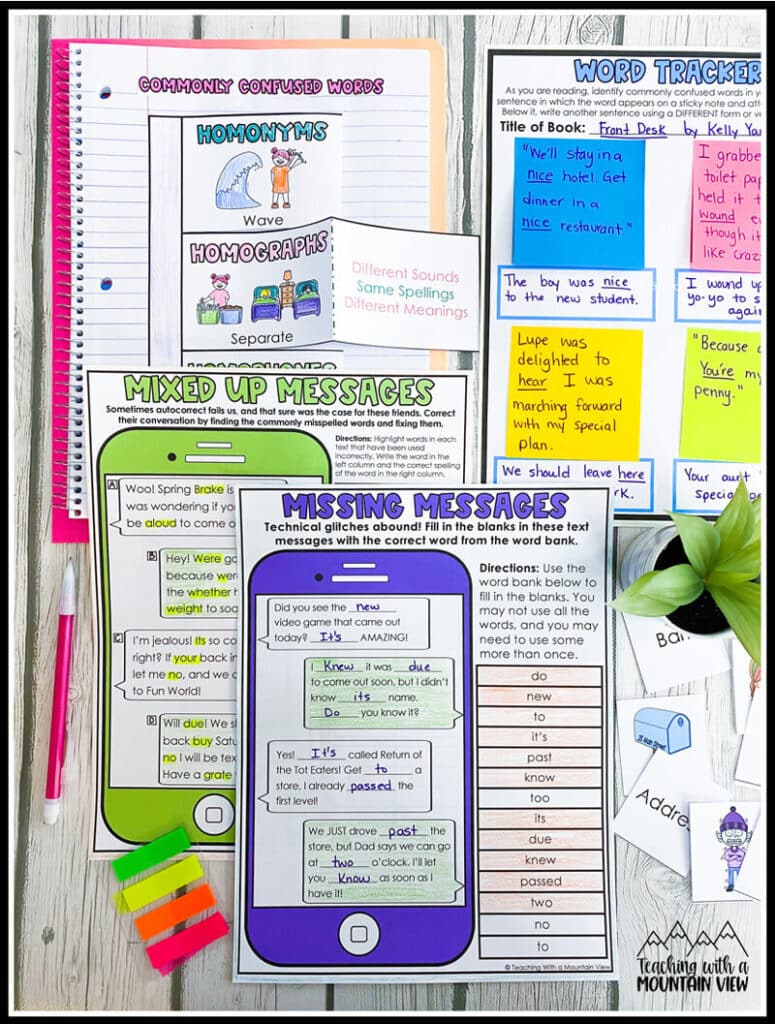
If you’re ready to teach commonly confused words, subscribe below for the commonly confused word kit featured in this post to be delivered to your inbox– free!
Mary Montero
I’m so glad you are here. I’m a current gifted and talented teacher in a small town in Colorado, and I’ve been in education since 2009. My passion (other than my family and cookies) is for making teachers’ lives easier and classrooms more engaging.







